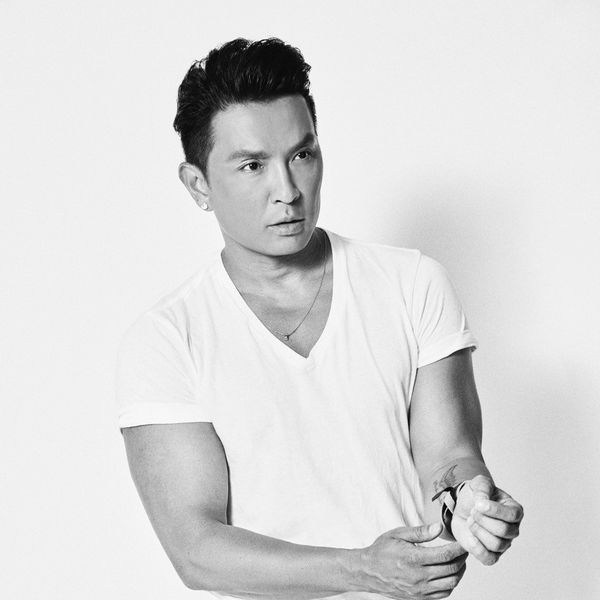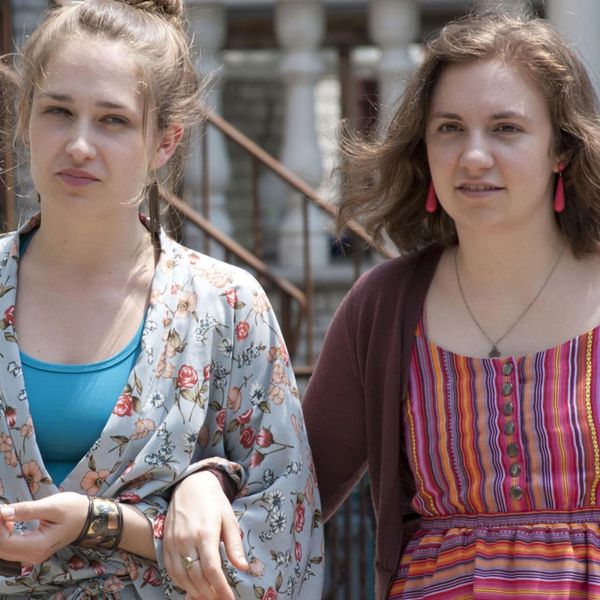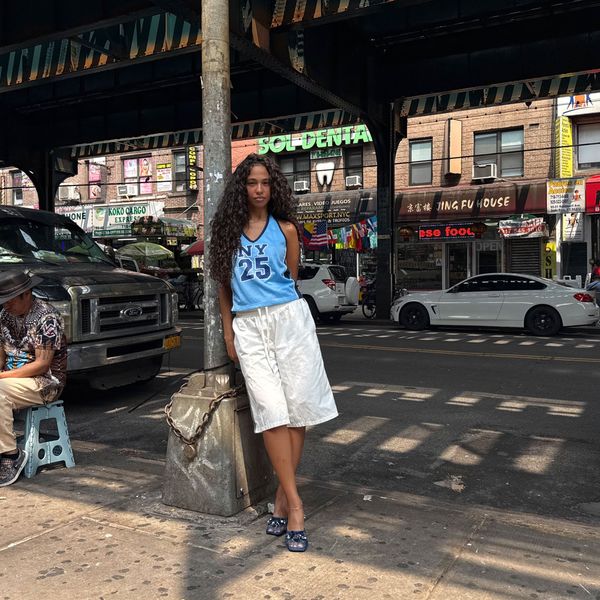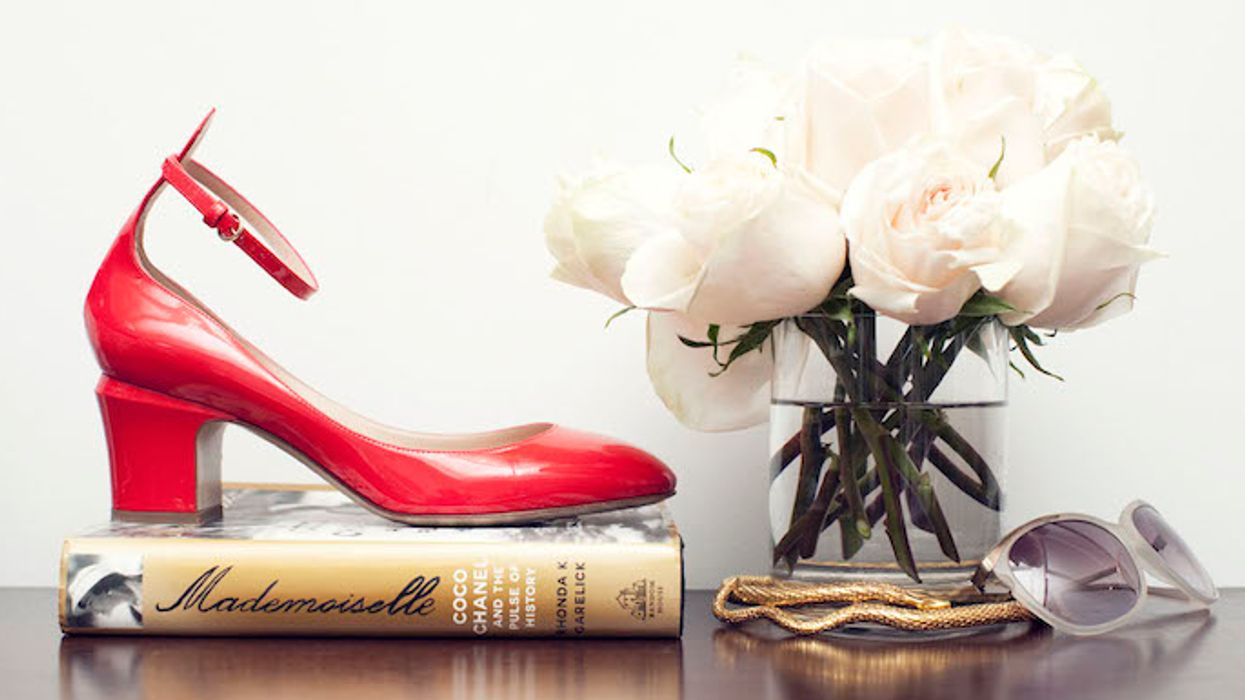
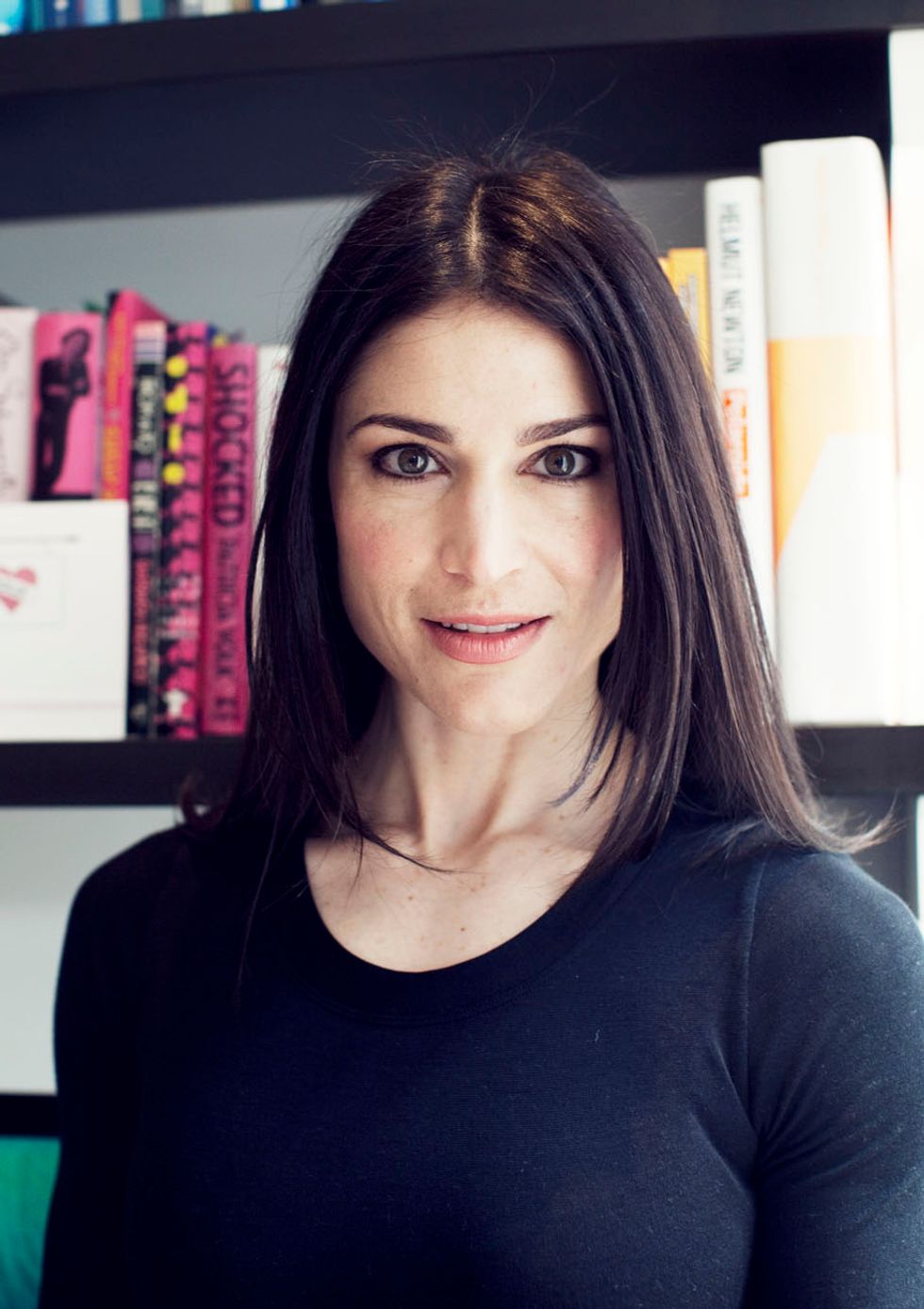
Welcome to Desksides, The Coveteur's brand-spanking-new series in which we sit down with leaders in various creative fields and figure out how they got there. We guess we could've also named this, "how the hell do I get your cool job," accompanied with a "help me I'm poor" GIF from Bridesmaids, but then realized going the mononymous route was a little more succinct.
We have to admit, when we first started our Desksides column, well, it was a bit of a selfish venture and likely a byproduct of our unrelenting inquisitiveness — hence the whole rummaging through closets thing. It’s people like Julie Ann Orsini — you know, who ‘fall into’ that unicorn-like career we’ve only wished we thought of first — that show us what life fulfillment is really all about. Orsini’s resumé is punctuated by more than a few backlashes: editor/writer/curator/archivist, the latter (where she found her true calling and which all began because of Tom Ford), has her perusing through decades of era-couture; preserving, cataloging, and documenting generations of historical and often rarely seen designs by the world’s most legendary maisons. Here, Orsini shares how she stumbled on everyone’s dream job, the most significant piece she’s every archived, and how she’s working to preserve fashion history.
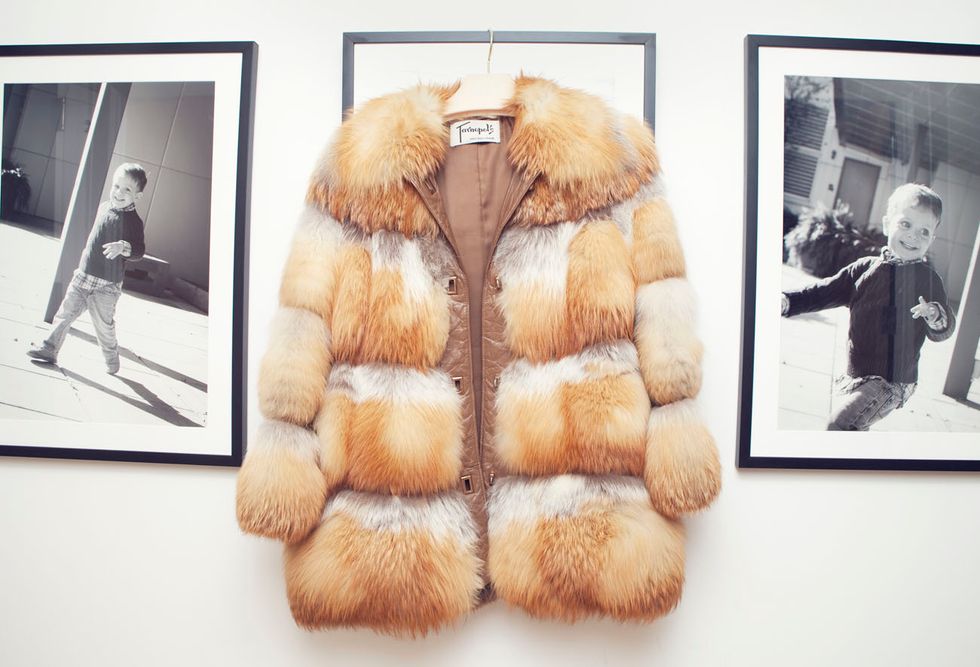
ON FALLING INTO ARCHIVING...
"I had been a fashion journalist and I was working at Life & Style. I was part of the original launch team of the magazine as the senior fashion writer. It was in the early 2000s and it was when celebrity was really hitting fever pitch. When Rachel Zoe was styling Lindsay Lohan and Nicole Richie, that kind of scene. But the connection between red carpet dressing and fashion really wasn’t anything that interested me too much and it wasn’t what I envisioned myself doing. So I went back to school and I got a Masters in the History of Fashion and Textiles, thinking that I would just be a much better writer if I really understood all the references and the history behind the clothes.
While I was in school, since it was a museum studies program, I sort of fell into doing gallery and museum work. I curated the Christian Louboutin show that was at the museum at FIT and I worked on the Stephen Sprouse show Deitch Projects. I sort of had it in my head that this would be a nice consulting business one day because no one is really doing this for designers — treating their archives the way people treat artist’s archives. When in fact, clothing and textiles are even more sensitive to the environment than canvases or sculptural art. So I was thinking there is so much history here that needs to be preserved. I was offered a job at Tom Ford, who was looking to start an archive, and I took it! I worked in-house for Mr. Ford for a few years and then about three years ago, I wanted to start my own business. In the interim I had a baby, I was working part-time, and I said to everyone at Tom Ford, ‘I’m ready to work somewhere but I don’t really think you need me full-time, so what my ideal situation would be, if you guys stayed clients of mine, I work for you as a consultant a few days a week and in my spare time I offer my services to other designers and private people who collect fashion. I was very lucky that they went for it!"
ON GAINING KNOWLEDGE FROM PAST EXPERIENCES...
"When you’re a fashion writer the more you know about the history of fashion, the better. You get the references, you understand what the designers are thinking, what they might have seen and been inspired by. One of my favorite finds, I think it was the opener for Louis Vuitton Fall 2014 with Freja in a brown and black leather coat. When I first saw it I was like, ‘I think that’s Jim Morrison’s leather coat’. And this weekend, I found the picture of him wearing basically the same outfit. It’s so 60s with a white turtleneck with the same jacket. So it’s things like that, having studied the history is invaluable if you’re writing about it. When you’re managing an archive it’s much more nitty-gritty collection management, like making sure everything is stored properly, things are documented properly, monitoring what’s going in and out, being loaned, being returned; it’s kind of like managing a fashion closet in a magazine except with more science behind how to take care of everything. Curating is more like the writing side of things; you need to understand the references, you have to be a good writer, and think about the story that you want to tell. It’s all really storytelling at the end of the day."

ON FIRST DOUBTING HER CAREER CHOICE...
"The first archive that I worked on was the Stephen Sprouse archive and we were at a warehouse in Williamsburg during a very hot summer with no air conditioning. I was throwing my back out with really heavy boxes, dripping sweat, and I was thinking ‘this kinda stinks. I don’t think I want to be an archivist.’ People hear this think, ‘oh my gosh, this is so amazing. You must have seen such wonderful things.’ And it’s true, you have, but at the end of the day, I’m often in a windowless warehouse somewhere sewing tags into something and packing up storage boxes and moving things around. It’s very physical work."
ON HER TRIUMPHS THUS FAR...
"I’ve been really lucky to work with some amazing people. I continually work for Mr. Ford, which is amazing, and right now, I’m doing a project for Calvin Klein. I’ve gotten to consult for Jason Wu, Proenza Schouler, and Ralph Rucci. Each time, I’m like ‘oh my gosh, I can’t believe that these people, in this amazing industry that I’ve loved since I was a little girl, are inviting me in to see everything that they have ever done’."
ON THE ARCHIVING PROCESS...
I will say for each project I tend to wear a very different hat. Say we’re taking one specific garment, for example; the first thing I would do is inspect it to see if it’s damaged, what needs to be perhaps repaired before we begin to store it properly, make sure it’s clean, because when you get samples back that have been on photo shoots, they might have makeup on the lining or the model might have perspired and you can’t store things like that. Because, one, it degrades the fiber over time, even if you don’t see it and sometimes stains can appear later on because of the chemical interaction. And two, things like that attract pests like bugs and rodents, so you have to be really careful that they are clean. Then I photograph everything. Dress the mannequin, take detail shots, take front and back shots, and we do something called A Condition Report when we’re deciding if it needs to be cleaned or repaired (so you always have a record of what condition you got it in and compare that when you need to send it out). Once it’s all documented and photographed we usually catalogue it in some kind of database depending on what the client uses. After that we decide what’s the best way to store this. Should it be hanging, should it be packed flat? There are all kinds of factors that go into making the decision. What the materials are, what the construction is, is it mixed media? Sometimes you’ll have a really delicate silk that’s embroidered with heavy beading and delicate feathers. So of course you would think, alright, it’s delicate silk with heavy embroidery on it, we should pack it flat because hanging will stress it. However, packing it flat will smush the feathers. So you need really have a strong background in what’s the best thing to do and sometimes you’re just making the best choice you can because there won’t be a perfect solution.

ON A TYPICAL DAY AS AN ARCHIVIST...
“I don’t have one, which is awesome! I could be doing everything from working in a client’s studio to being in a warehouse processing a new collection, to having creative meetings about how to utilize the archives and leverage those assets for all kinds of different projects. Sometimes if I’m doing something for a private client, I’m working in their home, and that’s fabulous because often these people have amazing homes. Usually my favorite thing is when I’m working on something for a private client and they want me to research and date their collection — because that’s heaven. I’m earning a living going through old editorials."
ON HER PERSONAL STYLE...
"I wrote my thesis about the Rolling Stones’ wives and girlfriends when I was in grad school. It’s amazing how germane those women are to how people dress and style themselves today—it won’t die, everybody loves them. So, I love that but I tend to look really good in classic shapes. I always say, Jackie O goes to a Rolling Stones show. But, when I’m archiving I’m in Van slip-ons or Stan Smiths."

ON WHAT INSPIRES HER...
"I live in NY and there are so many amazing people to look at around town and working in the industry. I love the intersection of music and fashion, especially in the 60s and 70s. People like Robert Plant, the Rolling Stones, Diana Ross, Motown singers. I just like the way these people used to style themselves for the stage. And of course old movies, old magazines, and old books. I’m sure you guys saw in the pictures that I have a huge wall of fashion and art books. Sometimes I’ll sit around with friends and look through all of them."
ON THE ONE ITEM SHE CAN'T GET OUT OF HER HEAD...
"Most of what I do is obviously later 20th Century or even contemporary, when I’m working for designers. But I did a project for Lisa Perry and she had the Rudi Gernreich dress that was on the cover of Time Magazine with Peggy Moffitt in 1967. That was really fun!"
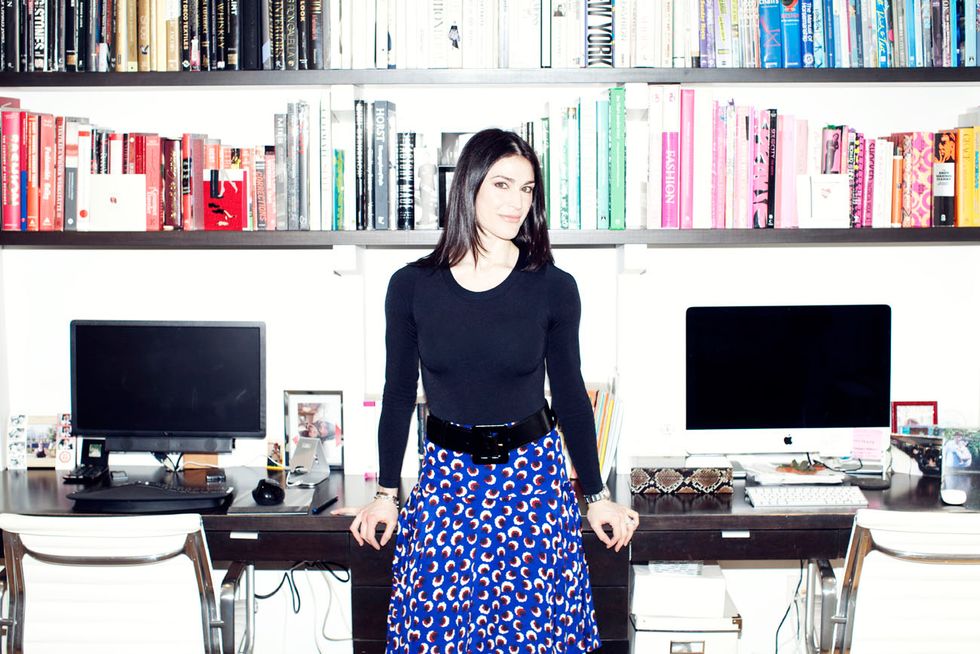
ON USING THE SAME TECHNIQUES OF ARCHIVING IN HER OWN CLOSET...
"You know what should be hanging is hanging, what is laying flat is laying flat. I’m constantly vacuuming things out of there. It’s made me a ruthless editor, I don’t hang onto things as much as I used to. I tend to eBay it or consign it if I’m not wearing it and loving it anymore because I get to see all this amazing stuff everyday working for my clients, so I have less of a personal need to hang to it."
ON THE BEST CAREER ADVICE SHE EVER RECEIVED...
"Don’t take it personally."
ON HOW TO MAKE IT IN FASHION...
"Work hard, be nice and get as much experience as you can."
ON THE BIGGEST PERK OF THE JOB...
"Getting to go into designer archives and seeing everything that they’ve ever created— in one day."

